#global organic textile standard
Text
GOTS Certification : Training - Consulting Provider - Global Organic Textile Standard
Global Organic Textile Standard Overview
The Global Organic Textile Standard (GOTS) is the worldwide leading textile processing standard for organic fibers, including ecological and social criteria, backed up by independent certification of the entire textile supply chain. The aim of the standard is to define world-wide recognized requirements that ensure organic status of textiles, from harvesting of the raw materials, through environmentally and socially responsible manufacturing up to labelling in order to provide a credible assurance to the end consumer
In USA the clothing’s certified by GOTS are only termed Organic
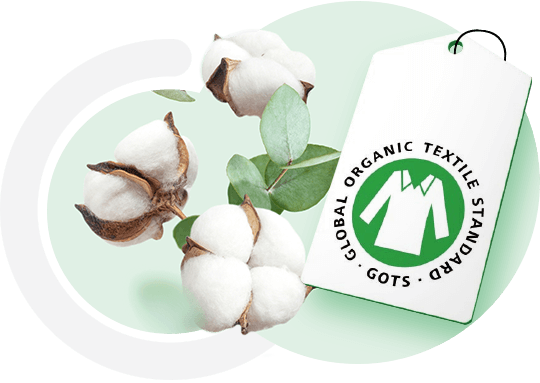
Scope And Applicability Of GOTS
Textile products that contain a minimum of 70% organic fibers can opt for GOTS certification. GOTS is applicable to entire textile supply chain.
It is applicable to industries processing, manufacturing, packaging, labelling, trading and distribution of all textiles made from at least 70% certified organic natural fibers.
Textile processing, manufacturing and trading entities.
Retailers selling GOTS Goods to end consumers may also voluntarily apply to become GOTS certified.
textile processing facilities that have processes such as ginning, spinning, weaving/knitting, dyeing & printing and stitching
GOTS Training
Our team of GOTS Consultants offers a customized GOTS training program on GOTS for
GOTS Requirements
SPECIFIC REQUIREMENTS
GOTS certification requires use of organic fibers certified by standards from IFOAM family (95% for “organic” label and 70% for “made with organic” label) in addition to requirements specified related to:-
Socially responsibilities
Quality Assurance System
Ecological Environment Conditions
Safe Working Conditions
International Labor Organization criteria
Toxicological criteria
DOCUMENTATION REQUIREMENTS
Depending on the processing stages performed, the policy should include procedures such as to monitor and minimize waste and discharges.
A program for continual improvement.
Wet processing units must keep full records of the use of chemicals, energy, water consumption and waste water treatment, including the disposal of sludge.
Benefits Of GOTS Implementation
Processors and manufacturers that receive a GOTS certificate of compliance are authorized to accept orders for GOTS compliant processing / manufacturing in their certified scope.
Certified exporters as well as traders are authorized to trade GOTS textile products that belong to the scope of their granted certification.
Entities that receive a GOTS scope certificate are free to advertise their certified status on the market.
Become listed in the GOTS public database on the website. Gaining End users trust in the products Organic Authenticity.
#GOTS Certification#GOTS Certification Training#GOTS Training#GOTS Consultants#GOTS Consulting#Benefits Of GOTS Implementation#Benefits Of GOTS#GOTS Requirements#Application Of GOTS#Global Organic Textile Standard
2 notes
·
View notes
Text
Global Organic Textile Standard Certification - PQS mitra
GOTS Certification aims at defining a Universal Standard for Organic Fabrics which overviews everything from harvesting raw materials to its labeling, in order to provide assurance to its consumer by GOTS certified organic cotton.
PQSmitra is one of the leading GOTS Certification Consultants in Mumbai, India. We provide Global Organic Textile Standard Certification for textile industries, garment & home - textile export house, etc.
PQSmitra is a leading Management Consultant with over 2500 satisfied clients, delivering high-quality Management Consultancy Services to organizations from all sectors in India and Overseas
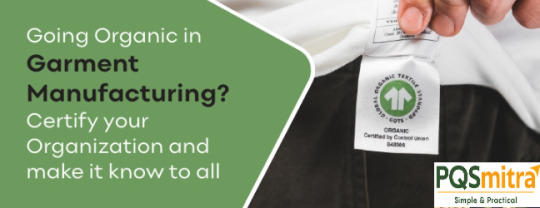
0 notes
Text
youtube
Watch the American Climate Leadership Awards 2024 now: https://youtu.be/bWiW4Rp8vF0?feature=shared
The American Climate Leadership Awards 2024 broadcast recording is now available on ecoAmerica's YouTube channel for viewers to be inspired by active climate leaders. Watch to find out which finalist received the $50,000 grand prize! Hosted by Vanessa Hauc and featuring Bill McKibben and Katharine Hayhoe!
#ACLA24#ACLA24Leaders#youtube#youtube video#climate leaders#climate solutions#climate action#climate and environment#climate#climate change#climate and health#climate blog#climate justice#climate news#weather and climate#environmental news#environment#environmental awareness#environment and health#environmental#environmental issues#environmental justice#environment protection#environmental health#Youtube
15K notes
·
View notes
Text
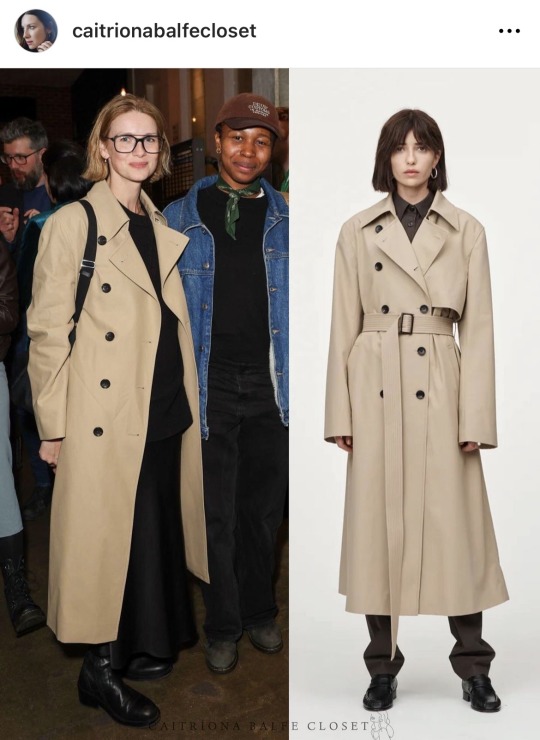

Note: the play is called Portia Coughlan Instagram
Remember… our Trench Coat is a classic style that you will wear over and over again. It is belted, with a half lining, dropped shoulder and over-sized look for an effortless look. It is made from 100% high twist organic cotton that is certified by the Global Organic Textile Standard. Finished with our biodegradable urea buttons made from starch. — Maria McManus
#Tait rhymes with hat#Good times#Fashion#Press Night#After Party#Portia Coughlan#Almeida Theatre#17 October 2023#London#Instagram#Thanks thetruthwilloutsworld
13 notes
·
View notes
Link
“Early this spring, employees of the denim producer Candiani dug a dozen holes into the rolling hills and forests overlooking the Ticino River. They were there to bury brand new blue jeans.
“The lab tests had already shown that our new jeans are compostable,” sustainability manager Danielle Arzaga says, “but we wanted to test it ourselves to be sure.”
Labeling something as compostable is a dirty trick many fashion labels use when their products only “compost” in special high-temperature commercial facilities.
But when the Candianis dug up the jeans again six months later, they discovered the fabric had mostly degraded to earth.
Alberto Candiani, the fourth-generation owner of the family business, had developed the first fully biodegradable denim, called Coreva.
“That doesn’t mean your jeans will fall off if you get rained on,” Candiani qualifies with a laugh. “They are extremely durable, but at the end of their life, yes, you could send them back to us and we recycle them, or you could fertilize your veggies with them. We have even fertilized cotton fields with our scraps.”
Jeans are among the most popular clothing on the planet — and one of the most environmentally taxing. Each pair requires up to 2,000 gallons of water to manufacture. And to produce Indigo blue, the dye that gives jeans their color, almost all manufacturers use benzene (a rat poison), mercury, and other toxins...
“Most jeans take hundreds of years to degrade,” says Arzaga. “Our stretch denim takes six months. We’ve created a truly circular model where materials can return to the earth naturally at the end of their life...”
By necessity, Candiani managed to reduce water use by 75 percent and the use of chemicals by 65 percent.
“We collect and reuse 100 percent of our waste fibers for our recycled denim line,” Alberto says. “It is possible to produce a pair of jeans with 20 or 30 liters of water.”” -via GoodGoodGood, 10/2/21
28 notes
·
View notes
Text
Fashion: Infinite World

Fashion is the style of clothing, accessories, and body image that is popular at a particular time. It is influenced by many factors, such as culture, history, the economy, and technology. Fashion can be seen as a form of self-expression and can be used to show and basically, Fashion is like your personal style signature. It's all about what makes you feel good and confident. Forget those old rules – if you love it, wear it! Fashion does have some common aspects like comfort so, wear whatever you want that makes you feel comfortable, there is no need to wear tight or skinny clothes to look fashionable.
The Nature of Fashion
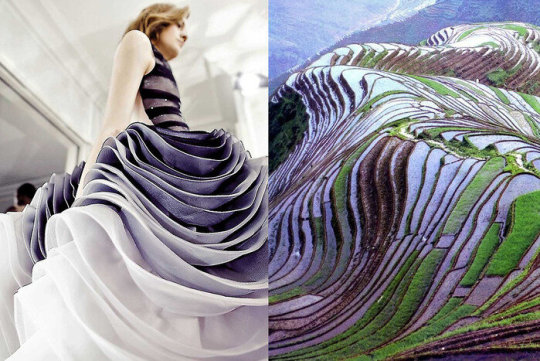
Fashion is not just the things we wear; It's about how we dress. It's about how we combine our clothes, how we choose our accessories and how we behave. It is a statement about who we are and what we believe.
Fashion can be a powerful tool for communication. It can be used to inform our behavior, our lives, our cultural history, and even our political views. It can be a way to show others who and what we are. For understanding fashion in better way, we must have to get some knowledge about the evolution of fashion
The evolution of fashion
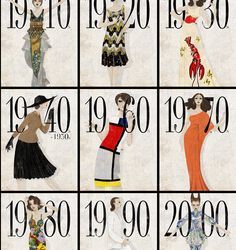
Fashion has been created over centuries, reflecting the changing world around us. From the flowing dresses of ancient civilizations to the avant-garde designs of today's catwalks, fashion continues to change, reflecting the trends and styles of the period.
In the 21st century, fashion went through a rapid process of change. Iconic designers such as Coco Chanel, Christian Dior and Yves Saint Laurent have revolutionized the industry with their innovative designs and timeless pieces.
Fashion in today's world
Today, Fashion is used more than ever. Thanks to the rise of mass media, social media and rapid communication, issues emerge and spread at lightning speed. Fashionistas around the world are eager to embrace new trends and fashion has become a major force offering affordable and stylish clothing to the masses. Fashion: our world's perspective
Fashion is our world, our culture and our values. It is a way to express our personalities and connect with others. It is a powerful and ever-changing force that continues to shape our world.
So the next time you get dressed, take a moment to appreciate the power of fashion. It's not what you wear those matters; It's about who you are.
Fashion is a diverse and ever-evolving field, encompassing a wide range of styles, trends, and influences. Here's an overview of some of the most prominent types of fashion:
1) High fashion

2) Ready-to-Wear Fashion
3)Streetwear
4)Vintage Fashion
5)Ethical Fashion
6) Handcrafted Fashion in handicrafts
Ethical fashion
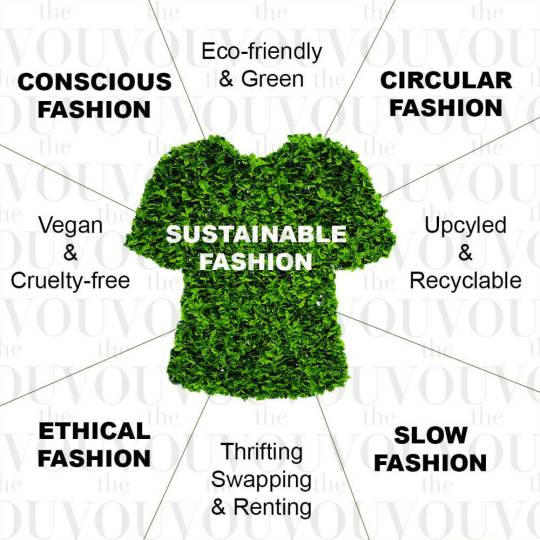
Ethical fashion is a movement that prioritizes social and environmental responsibility throughout the fashion industry. It includes the production, distribution and use of clothing and accessories. Beauty products are committed to fair craftsmanship, sustainable products and low environmental impact.
Community Action
About Fair Trade Fashion Workers' practice fair throughout the equipment. This includes ensuring fair wages, safe working conditions, and prohibiting child labor and forced labor. Ethical brands often work with fair trade organizations to ensure their products are produced by workers who are treated fairly and paid appropriately.
Environmental Sustainability
Ethical fashion also aims to reduce the environmental impact of the fashion industry. This includes using sustainable materials such as organic cotton, recycled polyester and sustainable wood products. Beauty products are also committed to reducing water and energy use and was
Consumer Responsibility
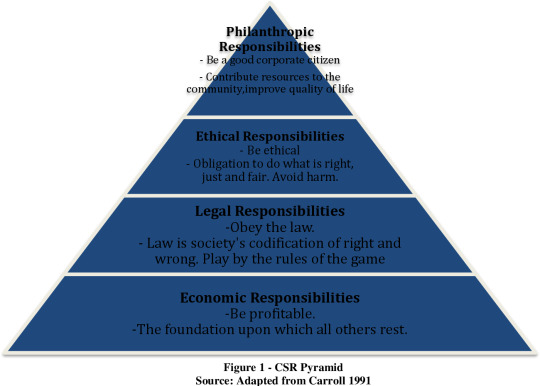
Consumers can play a role in promoting ethical behavior by making informed decisions about the products they purchase. They may seek certifications such as Fair Trade and GOTS (Global Organic Textile Standard) to ensure their products are ethical. Buyers can also support small, independent brands committed to sustainability and responsibility.
Benefits of Ethical Conduct
There are many benefits to ethical fashion, including:
Improved working conditions for garment workers
Reduced environmental impact
More sustainable use of resources
Increased transparency and accountability in the fashion industry
There are many types of ethics, both large and small. Some of the well-known ethical brands include:
Patagonia
Everlane
Human Tree
Fair Trade America
MATE Label
Consumers can help create a more sustainable brand by supporting ethical brands. and balanced fashion industry.
Handmade fashion: A Touch of Tradition and Originality
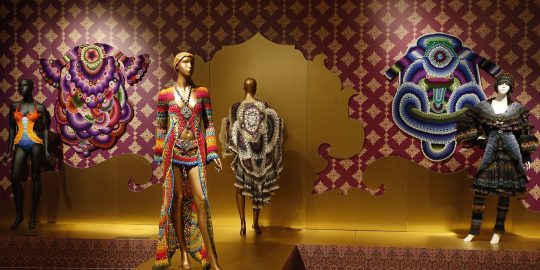
Handmade fashion is a type of fashion that is handmade using techniques and materials. It is generally seen as a better and more ethical way to produce variety because it does not rely on the use of harmful chemicals or labor.
There are many types of handicrafts:
Weaving: This is the process of making fabric from thread or yarn. Hand-woven fabrics are more durable and unique than machine-made fabrics.
Crochet: It is the technique of making fabric by tying the thread with hooks. Crocheted clothing is worn frequently and sells very well.
Knitting: It is the process of making fabric by combining yarn using a needle. Knitted clothes are generally warm and comfortable.
Embroidery: It is the process of decorating the fabric with stitches. Embroidery can be used to create different patterns and designs.
Bead Processing: It is the process of using beads in the making of jewelry and other decorative items. Beaded clothing and accessories are often colorful and eye-catching.
Besides traditional methods, there are also many new and innovative types of handmade fashion. For example, some designers use recycled materials to create clothing, while others use 3D printing to create unique and personalized designs.
Handmade fashion is growing in popularity, in part due to the demand for durability and stability. Material handling. Consumers are increasingly aware of the environmental and social impact of the fashion industry and are looking for ways to support businesses that prioritize these values.
Handmade fashion also attracts the attention of customers who are interested in unique handmade products. Handmade clothes and accessories are often the own art of a good and influential designer.
The future of handmade fashion is bright. As consumers become more aware of the benefits of handmade products and new technologies make it easier to create unique and personalized designs, handmade fashion is likely to continue to become mainstream.
Here are some of the benefits of handmade:
Unique design and personality: Handmade clothes are often of good quality and reflect the creator's own artistry.
Sustainable and Ethical Production: Handmade fashion is often made from sustainable materials and in small batches; This reduces the environmental impact of the fashion industry.
Support local artisans: Handcrafted products support local artisans and communities, helping to preserve traditional skills and create jobs.
Link to the past: Handicrafts often use techniques and materials that link to our heritage
Trend spotting
Trend spottng is the process of identifying and analyzing new trends in fashion, style and culture that will influence the creation of new clothing and accessories. This is an important part of the fashion industry because it allows designers to stand out from the rest, create products that resonate with consumers and dominate the competition. for spotting new trends we got a visit to”Shoppers Stop “
Shoppers Stop is an Indian department store chain founded in 1991. As of 2023, Shoppers Stop has 86 stores across 40 cities in India. The company offers a wide range of products, including clothing, accessories, footwear, cosmetics, home furnishings, and electronics. Shoppers Stop also operates premium home concept stores – Home Stop, specialty beauty stores of M.A.C, Estée Lauder, Bobbi Brown, Clinique and Smash box along with its subsidiary Crossword Bookstores Ltd across various cities of India
As of now according to our visit we have seen “Discover Autumn 23” is the latest trend on shoppers stop
Shoppers stop also got some latest trends for Men, Women and kids
Conclusion
As per the knowledge we gather from shoppers stop we can give our conclusion regarding the
Here are some of the latest trends at Shoppers Stop in 2023:
Sustainable fashion
Sustainable fashion is a major trend in 2023 and Shoppers Stop is committed to offering a wide range of eco-friendly options. They have a curated collection of sustainable brands like Levi's Wellthread, Reformation and Veja. They also offer their own sustainable brand, Love Earth.
Athleisure

athleisure on shoppers stop
Athleisure is still a major trend in 2023 and Shoppers Stop has a wide range of sportswear for men and women. They have everything from leggings and joggers to sports bras and trainers.
Y2K fashion

Y2K fashion on shopper's trail
Y2K fashion is back in 2023 and Shoppers Stop has a wide range of Y2K inspired pieces. They have everything from low rise jeans and crop tops to bow ties and hats.
Gender neutral fashion
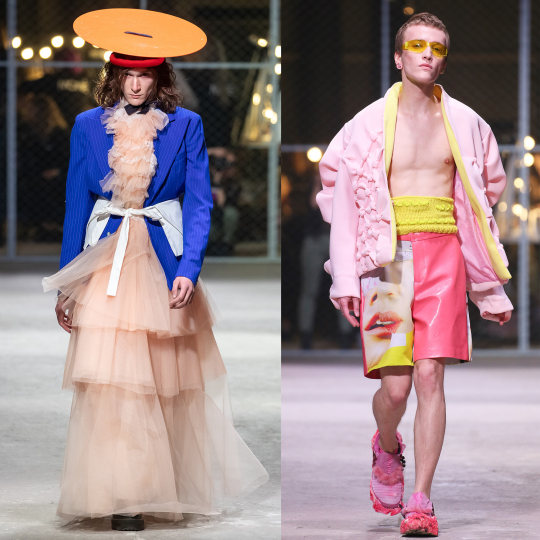
gender neutral fashion on shopper tracks
Gender neutral fashion is becoming increasingly popular and Shoppers Stop has a wide range of gender neutral pieces. They have everything from oversized sweaters and blazers to unisex t-shirts and jeans.
For Men we gott to see trends like we got to see a lot of shirts with different categories like
Bold Stripped, [perfectly tailored, Pop colours like Viva magenta and chartreuse and they also got some pretty all over print shirts
For women we got to see some latest trends for women liken we got to see some electric pops, elevated classics, versatile co-rd sets and but last not the least we also got to see some statement abstracts
At the end, shopper Stop has achieved the importance of new fashion trends of 2023 by following the evolving preferences and trends of Indian consumers. Promoting sustainability, sport, bright colours, chunky silhouettes, unisex fashion and handmade goods, Sellers Stop has positioned itself as a retailer that is both knowledgeable and inclusive. The store's commitment to offering a diverse and stylish business has positioned it as a top destination for those in need of fashion, stylish clothing and accessories. As fashion continues to evolve, Sellers Stop is a great place to innovate and stay ahead of the trend, continuing to be the go-to place for Indian consumers looking for trendy and sustainable fashion choices
2 notes
·
View notes
Photo
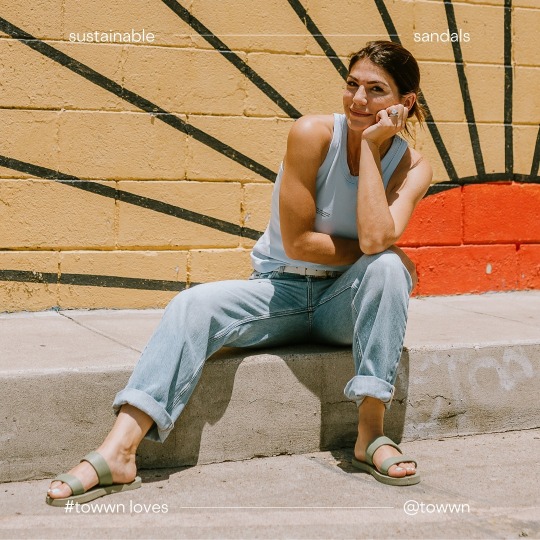
towwn: ♻️ sustainable sandals ♻️
8 sustainable shoe brands helping us put our collective best foot forward this summer:
@flipslide_au
love @genpadalecki’s mustard yellow slides? obvi. so do we! the natural rubber flip flops are vegan and simply sustainable. the aussie-based co. is easy on the eyes, the wallet, your feet + our planet. Snag a black pair now on pre-order or sign up to get notified when the new batch of colors are released.
@nomadicstateofmindhome
these rope art sandals have a real americana grassroots story, as the brand began in a 1969 vw bus & is currently based out of north carolina. they work with well-paid nicaraguan artisans and subscribe to a “no scraps left behind” business model.
@tkees
these sleek, minimalist sandals and flip flops are eternally in fashion, thus reducing “trendy” seasonal waste. plus, some of the best-selling styles have been reimagined in vegan leather.
@naeveganshoes
these unisex birkenstock-lookalikes are ethical and innovative, made with recycled car tires, natural cork and pineapple leaf fiber..
@allbirds
sustainably crafted using sugarcane, the popular sneaker company recently launched eco-friendly sliders + flip flops for both men and women made with the world’s first carbon negative green “eva” (i.e. the material used in basically all footwear soles).
@alterreny
design your own customizable sandals made from reclaimed fabrics and recycled plastic with this ny-based brand. they also employ fair labor practices + wages, support ocean plastic cleanup & donate to multiple nonprofits. though pricier than some others, the site boasts a 40-65% off sale section.
@etiko_fairtrade
the brand uses mostly eco-friendly materials, including global organic textile standard (#gots) cotton, traces its entire supply chain & minimizes waste. plus, buying these natural rubber unisex flip-flops automatically donates 10% to marine conservation org @seashepherd or bear charity @freethebears.
@itsyoursole
these classic flops are good for your feet + the planet. the orthopedic shape molds to your feet for equal pressure distribution, while soles are made from carbon-negative recycled wine corks.
17 notes
·
View notes
Text
youtube
Watch the 2024 American Climate Leadership Awards for High School Students now: https://youtu.be/5C-bb9PoRLc
The recording is now available on ecoAmerica's YouTube channel for viewers to be inspired by student climate leaders! Join Aishah-Nyeta Brown & Jerome Foster II and be inspired by student climate leaders as we recognize the High School Student finalists. Watch now to find out which student received the $25,000 grand prize and top recognition!
#ACLA24#ACLA24HighSchoolStudents#youtube#youtube video#climate leaders#climate solutions#climate action#climate and environment#climate#climate change#climate and health#climate blog#climate justice#climate news#weather and climate#environmental news#environment#environmental awareness#environment and health#environmental#environmental issues#environmental education#environmental justice#environmental protection#environmental health#high school students#high school#youth#youth of america#school
16K notes
·
View notes
Text
Organic Newborn Baby Clothes
Aaavio.com brings you an amazing 100% Organic Newborn Baby Clothes colors and design. We us Global organic textile Standard (GOTS) Certified Organic fabric.

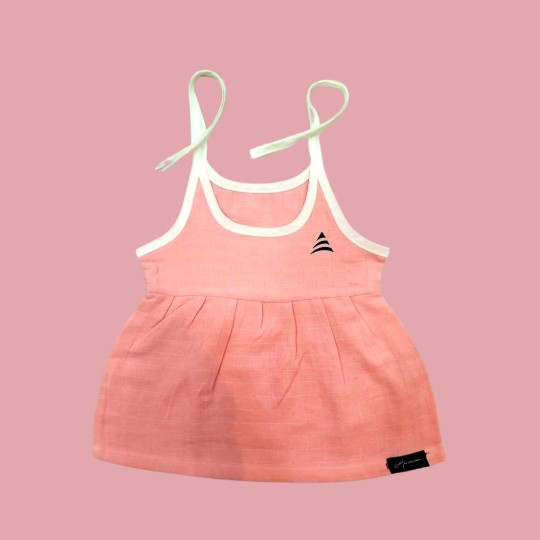
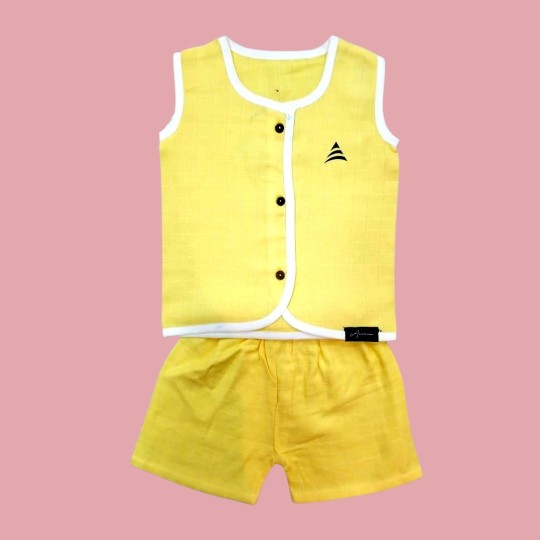
2 notes
·
View notes
Note
Some more worldbuilding ask for you since you seem to enjoy them :) What are some standard family structures in your world? What are the biggest commercial brands in your setting?
i do enjoy them ! it means i get to word vomit on main about stuff that i usually stick to word vomiting about in gabe's dms ... anyway:
the core family structure is the clan; the extended family is the basic unit in society rather than the nuclear or immediate family. uspanians are traditionally matrilineal, but it's common in the present for people to claim and be claimed by their paternal and maternal clans. historically, the matrilineal arrangement meant that a child's closest male relatives were their uncles rather than their fathers and, while not necessarily the norm, plural marriage happened. into the present, it's still the norm for children to be raised alongside their cousins, to be cared for by aunts, uncles, and grandparents as well as their parents. as far as the clan system is concerned, it's oriented around the decision-making responsibilities of elder female relatives and, moreso in the past, the relationships between clans in given regions or localities. not all clans are as ancient as others, and not all remain in residence in their original home places. uspana is large and unified under the leadership of a few families from different areas, so i think that affected the way the clan system organically reconfigured and was later formalized through nation-building / bureaucracy. the royal family adheres more strictly to older customs than the average contemporary clan, which means that clan mothers still regularly vote on everything from marriages to baby names to property transfers. i am rambling now, so let's move on !
re: commercial brands, that's such a good question to which i don't have any real answers ... generally, i like to avoid explicitly saying irl things exist in my fictional world, so presumably there are dupes for global brands like, uh, idk, apple or coca-cola or corona or whatever that have a foothold in the uspanian market. i've said elsewhere that uspana exports a lot of agricultural products, so i guess there are specific commercial entities wrapped up in that? foodstuff, but also textiles and raw materials. energy, especially the sustainable kind, is another significant sector, and i think there's a substantial fashion world, too ... i like to reverse engineer my worldbuilding by considering the historical counterfactual and moving forward in time. so, what does the ~commercial~ sector of a country in the western hemisphere that was never colonized or subject to economic imperialism look like in a modern liberal capitalist world? still thinking through that thought experiment.
5 notes
·
View notes
Photo
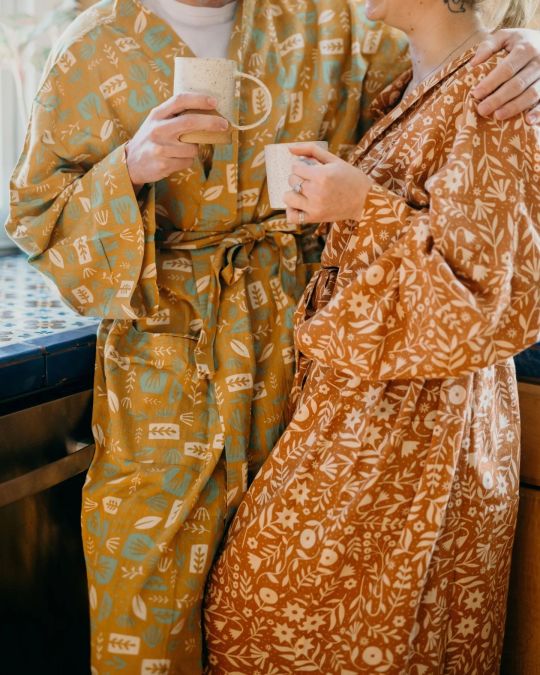
At Trek Light, we're passionate about creating products that not only enhance your daily life, but also have a positive impact on the world. Every robe is made with 100% handloomed cotton which is sustainably sourced and produced in the beautiful state of Jharkhand ("The Land Of Forest") in eastern India. In these remote villages, the art of handloom cotton weaving has been perfected and passed down throughout generations of weavers, and we're honored to be able to support their tradition and craftsmanship. Even better, the handspun cotton is made with traditional wooden looms, which are all manually operated and require zero electricity to operate. After the cotton fabric is woven, it's sent to a team of artisans near Delhi where it's hand dyed, printed and sewn. We use only 100% organic inks and dyes that meet the Global Organic Textile Standard and are free of all toxic and heavy metals, ensuring that our products are safe and gentle for both you and the environment. https://instagr.am/p/Co2cpRpuc-2/
2 notes
·
View notes
Text
The Ultimate Guide to Organic Bed Linen: Embrace Sustainable Luxury
Welcome to the world of organic bed linen – where luxury meets sustainability. In recent years, there has been a growing awareness of the environmental and health impacts of conventional bedding materials. As a result, many consumers are turning to organic bed linen as a natural and eco-friendly alternative. From sheets to duvet covers, organic bed linen offers a luxurious sleeping experience while minimizing environmental harm and promoting well-being.

Understanding Organic Certification
Organic bed linen is made from natural fibers that are grown and processed without the use of synthetic pesticides, fertilizers, or harmful chemicals. To ensure authenticity and integrity, reputable organic bed linen brands obtain certifications such as Global Organic Textile Standard (GOTS) or OEKO-TEX Standard 100. These certifications guarantee that the bedding materials meet strict environmental and social criteria, from cultivation to manufacturing.
Benefits of Organic Bed Linen
Environmental Sustainability
By choosing organic bed linen, you're supporting sustainable farming practices that prioritize soil health, biodiversity, and water conservation. Organic farming methods reduce the use of toxic chemicals, minimize carbon emissions, and promote ecological balance, making a positive impact on the environment.
Health and Well-being
Conventional bedding materials often contain traces of harmful chemicals and allergens that can impact respiratory health and exacerbate allergies. Organic bed linen, on the other hand, is hypoallergenic, breathable, and free from toxic substances, providing a safe and healthy sleeping environment for you and your family.
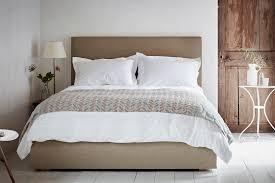
Superior Comfort and Durability
In addition to its environmental and health benefits, organic bed linen offers superior comfort and durability. Organic fibers such as cotton, linen, and bamboo are naturally soft, breathable, and moisture-wicking, ensuring a comfortable and restful night's sleep. Furthermore, organic bedding is designed to withstand frequent washing and maintain its quality and integrity over time.
Factors to Consider When Choosing Organic Bed Linen
Fiber Type
Select organic bed linen made from natural fibers such as organic cotton, linen, or bamboo. These materials are renewable, biodegradable, and environmentally friendly, offering luxurious comfort without compromising sustainability.
Thread Count
Consider the thread count when choosing organic bed linen. While a higher thread count typically indicates a softer and smoother fabric, it's essential to prioritize quality over quantity. Opt for bed linen with a thread count between 200 and 400 for a perfect balance of comfort and durability.
Color and Design
Choose organic bed linen in colors and designs that complement your bedroom decor and personal style. From classic neutrals to vibrant patterns, organic bedding options abound, allowing you to create a sanctuary that reflects your individuality and taste.
Top Picks for Organic Bed Linen
Discover our curated selection of organic bed linen essentials that combine luxury, sustainability, and style:
1. Organic Cotton Sheet Set
Indulge in the unparalleled softness of an organic cotton sheet set. Crafted from GOTS-certified organic cotton, this set includes a fitted sheet, flat sheet, and pillowcases, offering supreme comfort and peace of mind.
2. Linen Duvet Cover and Pillowcase Set
Elevate your bedroom decor with a linen duvet cover and pillowcase set. Made from European flax linen, this set exudes rustic elegance and breathability, ensuring a cozy and inviting sleeping environment.
3. Bamboo Bedding Bundle
Experience the luxurious feel of bamboo with a bamboo bedding bundle. Featuring a bamboo duvet cover, sheets, and pillowcases, this bundle is naturally hypoallergenic, antimicrobial, and moisture-wicking, providing a fresh and rejuvenating sleep experience.
Conclusion
In conclusion, organic bed linen offers a harmonious blend of luxury, sustainability, and well-being, transforming your bedroom into a sanctuary of comfort and style. By choosing organic bed linen, you're making a conscious decision to support the environment, prioritize health, and indulge in the finest quality bedding available.
0 notes
Link
Check out this listing I just added to my Poshmark closet: “Liv” Naked Cashmere Mini Dress. NEW W/Tags! THIS DRESS IS SO LOVABLE! An asset!.
0 notes
Text
Eco-Friendly Mattress Pads: How Suppliers Are Meeting Sustainable Demands

Introduction
In recent years, there has been a significant shift in consumer preferences towards eco-friendly products. This trend is particularly evident in the bedding industry, where sustainable mattress pads are becoming increasingly popular. As more consumers become aware of their environmental footprint, they seek out products that are not only comfortable but also made with sustainable materials and processes. Mattress pads suppliers have recognized this demand and are stepping up their efforts to offer eco-friendly solutions.
Innovative Materials for a Greener Future
One of the primary ways mattress pads suppliers are meeting sustainable demands is through the use of innovative, eco-friendly materials. Organic cotton, bamboo, and recycled fibers are some of the popular choices. Organic cotton is grown without harmful pesticides and synthetic fertilizers, reducing its environmental impact. Bamboo, known for its rapid growth and minimal resource requirements, is another excellent sustainable option. Additionally, some suppliers are incorporating recycled materials, such as polyester made from recycled plastic bottles, into their mattress pads. These materials not only reduce waste but also offer exceptional comfort and durability.
Sustainable Manufacturing Practices
Beyond the materials used, the manufacturing processes play a crucial role in the sustainability of mattress pads. Leading suppliers are adopting green manufacturing practices to minimize their environmental impact. This includes reducing water and energy consumption, minimizing waste, and ensuring that all by-products are handled responsibly. Some suppliers have even achieved certifications such as Global Organic Textile Standard (GOTS) and OEKO-TEX, which verify that their products meet high environmental and social responsibility standards. By prioritizing sustainable manufacturing, these suppliers are setting new benchmarks in the bedding industry.
Packaging and Distribution: Reducing the Carbon Footprint
Sustainability efforts extend beyond production to packaging and distribution. Eco-friendly mattress pads suppliers are adopting sustainable packaging solutions, such as using recycled and recyclable materials, and reducing unnecessary packaging. Additionally, they are optimizing their distribution networks to lower carbon emissions. This includes consolidating shipments, utilizing energy-efficient transportation methods, and working with logistics partners committed to sustainability. These measures ensure that the eco-friendly benefits of the mattress pads are maintained throughout the product's lifecycle.
Educating Consumers and Building Awareness
An essential aspect of the shift towards sustainable mattress pads is educating consumers about the benefits and availability of eco-friendly options. Suppliers are increasingly investing in marketing and educational campaigns to raise awareness about the environmental impact of traditional bedding products and the advantages of choosing sustainable alternatives. By providing transparent information about their materials, manufacturing processes, and sustainability certifications, suppliers help consumers make informed decisions that align with their values.
The Future of Eco-Friendly Mattress Pads
As the demand for sustainable products continues to rise, the future of eco-friendly mattress pads looks promising. Suppliers are continually researching and developing new materials and technologies to enhance the sustainability and performance of their products. Collaborations with environmental organizations and adherence to stricter regulatory standards will further drive the industry towards greener practices. Ultimately, the combined efforts of suppliers and consumers will contribute to a more sustainable and environmentally conscious future in the bedding industry.
In conclusion, mattress pads suppliers are meeting sustainable demands by using innovative materials, adopting green manufacturing practices, optimizing packaging and distribution, and educating consumers. These efforts not only address the growing demand for eco-friendly products but also pave the way for a more sustainable and responsible bedding industry.
0 notes
Text
Apparel Business Solutions: Strategies for Small and Medium Enterprises

Introduction:
Sustainability has become a critical focus in the textile industry, driven by increasing consumer demand for eco-friendly products and ethical manufacturing processes. Textile business solutions play a pivotal role in promoting and implementing sustainable practices across the industry. This article explores the various ways in which textile business solutions contribute to sustainability, highlighting their impact on environmental conservation, resource efficiency, and corporate responsibility.
1. Sustainable Sourcing and Supply Chain Management:
One of the primary areas where textile business solutions contribute to sustainability is in sourcing and supply chain management. Advanced platforms and tools enable companies to track the origin of raw materials, ensuring they are sourced responsibly. Solutions such as Fibre2Fashion provide transparency and traceability, allowing businesses to verify the sustainability credentials of their suppliers and make informed sourcing decisions. This transparency helps in reducing the environmental impact of raw material extraction and promotes ethical labor practices.
2. Resource Efficiency and Waste Reduction:
Textile business solutions are instrumental in optimizing resource use and minimizing waste throughout the production process. Technologies such as AI and machine learning can analyze production data to identify inefficiencies and suggest improvements. For instance, predictive analytics can help manufacturers optimize fabric-cutting patterns to reduce material waste. Additionally, business solutions that incorporate recycling and upcycling processes enable companies to repurpose waste materials, thereby reducing landfill contributions and conserving resources.
3. Energy Management and Emission Reduction:
Energy consumption and emissions are significant concerns in the textile industry. Business solutions that monitor and manage energy use can lead to substantial reductions in carbon footprints. For example, energy management systems can track energy usage in real-time, identify areas of excessive consumption, and recommend energy-saving measures. By adopting renewable energy sources and improving energy efficiency, textile companies can significantly reduce their greenhouse gas emissions, contributing to global efforts to combat climate change.
4. Sustainable Product Design and Development:
Textile business solutions facilitate the design and development of sustainable products by providing tools for eco-friendly material selection and lifecycle assessment. Software platforms can help designers choose materials with lower environmental impacts and incorporate sustainability into their product development processes. Lifecycle assessment tools evaluate the environmental impacts of a product from raw material extraction to disposal, enabling companies to make data-driven decisions to minimize their ecological footprint.
5. Compliance and Certification Management:
Staying compliant with environmental regulations and obtaining sustainability certifications are crucial for textile companies. Business solutions offer compliance management systems that keep track of regulatory requirements and ensure adherence to environmental standards. These solutions also assist in obtaining and managing certifications such as Global Organic Textile Standard (GOTS), OEKO-TEX, and Fair Trade, which validate the sustainability claims of textile products and enhance their market credibility.
6. Consumer Education and Engagement:
Educating and engaging consumers about sustainable practices is essential for driving demand for eco-friendly products. Textile business solutions provide platforms for companies to communicate their sustainability initiatives and educate consumers about the benefits of sustainable textiles. Through transparent communication and storytelling, businesses can build trust and loyalty among eco-conscious consumers. Additionally, solutions that offer product traceability allow consumers to verify the sustainability of their purchases, fostering informed and responsible buying decisions.
7. Circular Economy Initiatives:
The shift towards a circular economy, where products are designed for reuse, recycling, and regeneration, is gaining momentum in the textile industry. Business solutions that support circular economy initiatives enable companies to implement closed-loop systems, where textile waste is repurposed into new products. These solutions facilitate the collection, sorting, and processing of textile waste, promoting a sustainable lifecycle for textile products and reducing the reliance on virgin resources.
8. Innovation and Collaboration:
Innovation and collaboration are key drivers of sustainability in the textile industry. Textile business solutions foster collaboration among industry stakeholders, including manufacturers, suppliers, designers, and researchers, to develop innovative solutions for sustainability challenges. Platforms like Fibre2Fashion provide a collaborative environment for sharing knowledge, best practices, and technological advancements, accelerating the adoption of sustainable practices across the industry.
Conclusion:
Textile business solutions play a vital role in advancing sustainability in the textile industry. From sustainable sourcing and efficient resource use to energy management and consumer engagement, these solutions empower businesses to adopt eco-friendly practices and contribute to a more sustainable future. As the industry continues to evolve, the integration of advanced business solutions will be crucial in driving sustainable transformation and meeting the growing demand for environmentally responsible textiles.
0 notes
Text
Apparel Manufacturer in Bangladesh: A Comprehensive Guide
Bangladesh has emerged as a global powerhouse in the apparel manufacturing industry, becoming one of the most sought-after destinations for fashion brands and retailers worldwide. The country’s impressive growth in the textile and garment sector is underpinned by its skilled workforce, competitive pricing, and robust production capacity. This article delves into the intricacies of the apparel manufacturer in bangladesh landscape in Bangladesh, highlighting key aspects that make it a preferred choice for international brands.
The Rise of Bangladesh's Apparel Industry
Historical Context and Growth Trajectory
The journey of Bangladesh’s apparel industry began in the late 1970s and has since seen exponential growth. From humble beginnings, the sector has transformed into a multi-billion-dollar industry, accounting for a significant portion of the country’s GDP and exports. The pivotal moment came with the establishment of export-oriented garment factories, which attracted foreign investments and partnerships.
Economic Impact and Employment
The apparel sector is a cornerstone of the Bangladeshi economy, providing direct employment to over 4 million people, predominantly women. This industry has not only uplifted the economic status of millions of households but has also contributed to the country’s socio-economic development. The Ready-Made Garments (RMG) sector alone constitutes over 80% of Bangladesh’s total exports, highlighting its critical role in the nation’s economic landscape.
Key Advantages of Manufacturing Apparel in Bangladesh
Cost-Effective Production
One of the foremost advantages of apparel manufacturer in bangladesh is the cost-effectiveness. The country offers some of the most competitive labor costs globally, which translates into lower production costs for international brands. This cost advantage does not compromise the quality, as Bangladeshi factories adhere to stringent quality control measures to meet global standards.
Skilled Workforce
Bangladesh boasts a large pool of skilled workers who are adept at handling complex garment production processes. The government and private sector have invested significantly in vocational training programs to enhance the skill set of the workforce. This investment ensures that Bangladeshi apparel manufacturers can produce high-quality garments that meet the specific requirements of global brands.
Robust Infrastructure
Over the years, Bangladesh has developed a robust infrastructure to support its apparel manufacturing industry. The country is home to numerous state-of-the-art manufacturing facilities equipped with modern machinery and technology. Additionally, improvements in transportation and logistics infrastructure facilitate the efficient movement of goods, ensuring timely delivery to international markets.
Sustainability and Ethical Practices
Commitment to Sustainability
In recent years, there has been a growing emphasis on sustainable and ethical practices within the Bangladeshi apparel industry. Many manufacturers have adopted eco-friendly production methods, such as using organic cotton, reducing water consumption, and implementing waste management systems. These practices align with global sustainability standards and cater to the increasing demand for environmentally conscious products.
Social Compliance and Worker Welfare
The Bangladeshi government and industry stakeholders have made significant strides in improving working conditions and ensuring social compliance. Initiatives such as the Accord on Fire and Building Safety in Bangladesh and the Alliance for Bangladesh Worker Safety have been instrumental in enhancing factory safety standards. Additionally, manufacturers prioritize worker welfare by providing fair wages, healthcare facilities, and ensuring workers’ rights are protected.
Challenges and Opportunities
Navigating Industry Challenges
Despite its impressive growth, the apparel manufacturing industry in Bangladesh faces several challenges. These include political instability, infrastructural bottlenecks, and regulatory hurdles. However, the industry has shown resilience and adaptability in overcoming these obstacles. Continuous improvements in infrastructure, government support, and international collaborations are paving the way for a more robust and stable manufacturing environment.
Future Opportunities
The future of Bangladesh’s apparel industry looks promising, with numerous opportunities on the horizon. The global shift towards digitalization and automation presents a unique opportunity for Bangladeshi manufacturers to integrate advanced technologies into their production processes. Moreover, expanding into new markets and diversifying product offerings can further enhance the industry’s growth prospects.
Leading Apparel Manufacturers in Bangladesh
Top Companies and Their Contributions
Several leading apparel manufacturers in Bangladesh have made significant contributions to the industry’s success. Companies such as BGMEA (Bangladesh Garment Manufacturers and Exporters Association), Beximco, and DBL Group are at the forefront of innovation, sustainability, and quality in garment production. These companies have established strong reputations globally, supplying to major fashion brands and retailers.
Innovation and Quality Assurance
Innovation is a key driver for the success of Bangladeshi apparel manufacturers. Companies continually invest in research and development to introduce new fabrics, designs, and production techniques. Quality assurance remains a top priority, with manufacturers implementing rigorous quality control processes to ensure that every garment meets international standards.
Conclusion
Bangladesh’s apparel manufacturing industry stands as a testament to the country’s capabilities and potential in the global market. With its cost-effective production, skilled workforce, robust infrastructure, and commitment to sustainability, Bangladesh continues to be a preferred destination for international apparel brands. Despite the challenges, the industry’s resilience and adaptability ensure a promising future, driven by innovation and a dedication to quality.
0 notes
Text
Eco-Friendly Interior Design: Tips for Sustainable Living Room

Sustainable interior design brings a major impact on our environment, the material you use in every material contributes to the overall ecological footprint. But what if HSAA-Home interior design company helps you create a beautiful and stylish space that is dedicated to a greener home with an eco-friendly environment?
The role of sustainable interior design prioritizes eco-friendly design throughout the overall process. The main aim of our company is to maximize the environmental impact while keeping the comfort, functionality and aesthetics.
This term considers the complete life cycle of a product, from its creation to use and disposal or potential use.
Sustainability in interior design is to adopt ecological materials and sources to create a visually beautiful and considerate environment. By utilizing recycled, biodegradable, and waste materials, interior designers can include sustainability in their kitchens, living rooms, office spaces and more. For flooring, bamboo can be used in place of hardwood.
How you can implement eco-friendly design in your interior design journey:
Reduce, Reuse and Recycle: These are the main aspects of interior design. Reuse the furniture and decor you already have to reduce the need for new purchases. Explore antique shops, flea markets, or online marketplaces to find a good alternative to previously owned items. Start prioritizing giving to new products that are manufactured from recycled materials such as bamboo, cork and old wood.
Sustainable Materials: For good indoor air quality, choose natural, low-VOC (volatile organic compound) materials. The certifications such as GOTS (Global Organic Textile Standard) for textiles and FSC (Forest Stewardship Council) for wood items. Start picking eco-friendly methods like recycled glass countertops, cork tiles, or bamboo flooring.
Water Conservation: Fit your bathroom and kitchen with water-saving fixtures. To cut down on water usage, choose good fixtures and low-flow shower heads. Choose the top kitchen renovation in Delhi for the best services to maintain your kitchen.
Make the right consumption: Avoid impulsive buys and make long-lasting investments in high-quality, well-made items. This helps in less waste and encourages more deliberate consumption. Select furniture with classic styles and muted color schemes to increase its adaptability.
Why Is Sustainable Design Important for Interior Design?
HSAA- The best interior designers in Delhi describe how important it is to protect the environment. Minimizing environmental problems also reduces the aftermath on Earth by saving time, money, and effort. It ensures efficiency and creates a healthy approach to environmental interior design while satisfying clients.
Now you understand the importance and principles, let’s dive into practical solutions to translate them into stunning and sustainable living spaces.
1. Natural Light’s Power:
Optimize natural light by maintaining hygiene and clean windows. Organize furniture in such a manner that it doesn’t obstruct the sun. Start using translucent shades or drapes to preserve seclusion while letting in diffused light. Use well-placed mirrors to reflect more light from the outside which makes the space feel lighter and more spacious. As a result, less artificial lighting is needed during the day.
2. Embrace the natural Plantation:
Indoor plants not only add a touch of positivity and serenity to your space but also contribute to a healthier environment. Plants and greenery are present as natural air purifiers that help in absorbing toxins and releasing oxygen. A variety of species are known for their air-purifying qualities, such as snake plants, spider plants, and more. This will help in providing sustainable interior design to your space.
3. Reuse and Repurpose:
Give old furniture and décor a new look by opting for the method of reuse and recycling. Upcycle vintage suitcases into beautiful side tables or ottomans that create a pleasant look to your old space. Book the best interior design services in Delhi and Transform your space into something beautiful that tells a story.
Get creative and explore online tutorials for DIY home decor by using old materials. Not only will you save money, but you’ll also minimize waste and create unique pieces with a personal touch.
4. Sustainable Textiles and Flooring:
Choose natural fibers like organic cotton, linen, wool, or jute for rugs, throws, and more. All the 2BHK and 3BHK flats’ interior designs utilize sustainable textiles and flooring concepts for long-term commitment and a healthy lifestyle. These materials are not only comfortable but also biodegradable. Discover recycled wool rugs or sisal floor coverings for sustainable flooring options.
5. Energy-structured Appliances:
When you are looking to replace appliances, pick out Energy Star-certified models that are dedicated to being more energy-efficient. This reduces your overall energy consumption and helps save money on high-cost bills.
6. Choose Eco-friendly Products:
Ordinary cleaning products usually contain harsh chemicals that can pollute the air and water. Switch to eco-friendly cleaning solutions made from natural ingredients like vinegar, baking soda, and essential oils. These are not only safe for your health but also work best for the environment.
7. Go for sustainable smart technology :
Home interior design companies in Delhi play a significant role in eco-friendly living. Invest in smart technology to control your home’s temperature remotely that helps in preventing unnecessary energy use. Smart power technology can automatically cut power to electronics when not in use.
8. Water-Saving Methods:
Install low-flow showers and other bathroom fixtures to reduce water consumption without wasting water pressure. Think about installing a water-efficient toilet as well.
Benefits of Eco- friendly interior design
By accommodating eco-friendly designs and creations, you’re not only creating a beautiful and stylish home but also providing a vast list of benefits:
Reduced Environmental Impact: Using sustainable and eco-friendly designs helps minimize your high bills and conserve resources for future generations.
Improved Indoor Air Quality: Eco-friendly materials and sustainable products promote healthier indoor air and hygiene and reduce harmful chemicals.
Enhanced Well-being: High access to natural light, plants, and natural materials can contribute to a more relaxing and positive living environment.
Cost Savings: Energy systematic appliances can help in saving bills.
Uniqueness: Reuse and repurposed pieces along with a focus on natural materials create a more individual and spacious filled space.
Why is sustainability so important in interior design?
Sustainability in interior design is about creating beautiful and functional spaces, but also environmentally friendly and healthy. Here’s why it’s important:
Environmental Impact:
The construction and furnishing industry has a major impact on the environment. Sustainable eco-friendly designs mainly aim to reduce this impact by using recycled materials, minimizing waste, and conserving the best resources. This can involve using locally sourced materials, opting for energy-structured appliances, and accommodating natural lighting.
Long-Term Value:
Sustainable eco-friendly materials are often chosen for their durability and long-term commitment. This means they will last longer, require less replacement and save money. Additionally, sustainable design can help to improve energy efficiency leading to lower bills.
Huge Client Demand:
As people become more aware of environmental issues, there’s a high-rise demand for sustainable design and eco-friendly interior products.
What differentiates sustainable design from green design?
The objective of green design is to lessen the negative effects of cement buildings, electricity, and household appliances. Sustainability has a major influence on interior design because it makes energy-efficient infrastructure possible.
On the other hand, The focus of sustainable design is mostly on the structure itself, utilizing reusable elements like glass and stone to create a long-lasting impact. Contemporary interior designers utilize computer- technologies such as BIM and AR to attain sustainable eco-friendly designs, particularly in large-scale projects.
Inspiration and Resources for Your Eco-Friendly Journey
HSAA guides you on your eco-friendly design journey. Here are a few suggestions:
Online Marketplaces: Explore online platforms like Etsy or Amazon to find unique, vintage, or upcycled furniture and décor pieces.
Sustainable Design Magazines and Websites: Check out publications dedicated to sustainable living and eco-friendly design. These resources offer stunning methods, practical tips, and insights from interior design professionals.
Sustainable Furniture Brands: Explore furniture brands committed to sustainable methods and ethical manufacturing. Many brands offer beautifully crafted pieces using recycled materials or local, responsibly sourced wood.
To sum up, Eco-friendly interior design is not about changing style or comfort. It’s about creating designs in such a way that helps both nature and humans. By choosing sustainable designs and eco-friendly materials, you can create a beautiful, healthy living space for a sustainable future.
Let recycling methods help you in the journey of sustainable interior design and remember, small steps can lead to ultimate change. With a little planning and effort, you can create a comfortable and stylish home that is helpful to the environment.
0 notes
Text
Enhancing Social Accountability: A Case Study on Implementing SA 8000 Standards
What is SA 8000 certification?
SA 8000 Certification in Chad the Council on Economic Priorities Accreditation Agency (CEPAA), created the SA 8000 certification standard. The foundation of SA 8000 is the universal declaration of human rights, the UN Convention on the Rights of the Child, and treaties of the International Labour Organization, which outline international human rights rules.SA 8000 offers a structure that enables companies to show their dedication to social responsibility and moral behavior at work. Child labor, forced labor, health and safety, freedom of association and collective bargaining, discrimination, disciplinary procedures, working hours, and pay are only a few of the topics it addresses.
How business will get Benefits by SA 8000 certification?
Improved Reputation: The company's reputation and brand value may be improved by obtaining SA 8000 accreditation, which shows a dedication to social responsibility and ethical business practices.
Competitive Advantage: SA 8000 Implementation in Nigeria by setting the business apart from rivals who might not hold similar credentials, certifications can give an organization a competitive edge.
Better Stakeholder Relationships: The community, investors, staff, and consumers are just a few of the stakeholders that a SA 8000 accreditation may assist strengthen and establish trust with.
Legal Compliance: By guaranteeing adherence to regional and global labor norms, certification lowers the possibility of legal problems.
What kind of Business is suitable for SA 8000 certification?
SA 8000 Audit in Zimbabwe certification is suitable for businesses of all sizes and industries that want to demonstrate their commitment to social accountability and ethical practices.Manufacturing and production companies typically have labor-intensive processes and intricate supplier lines, making ethical labor standards essential.The SA 8000 certification is useful in proving conformity with ethical standards because the textile and apparel industry has historically been linked to problems including child labor and unfavorable working conditions.Food and Agriculture: Companies in this industry can demonstrate fair labor practices, especially in regards to migrant worker rights and safety, by obtaining SA 8000 accreditation.
How much does SA 8000 certification will cost?
SA 8000 Cost in Mumbai certification can vary depending on several factors, such as the size and complexity of your organization, the number of employees.Initial Assessment: In this phase, your organization's management system is assessed by the certification authority in accordance with SA 8000 standards. The price may vary based on the previously listed parameters, from a few thousand to tens of thousands of dollars.
Implementation costs: These are the expenses related to putting new policies and processes, infrastructure upgrades, and training into place in order to comply with SA 8000 criteria.
Certification Audit: Following the implementation of your management system, a certification audit is carried out to ascertain whether your company complies with SA 8000 requirements. The price varies based on your organization's complexity and size.
How To Get a SA 8000 Consultant?
SA 8000 Consultants Services in Jordan as a B2BCert consultant specializing in SA 8000 certification services, we can guide you through the process step-by-step to ensure a smooth and successful certification journey. Do some web research and look for SA 8000 consultants. Search engines and professional networking sites are good places to look for experts with expertise in social responsibility and ethical standards Verify Certification Bodies: A list of authorized consultants is frequently available from certification bodies that provide SA 8000 certification.
#SA 8000 Consultants in Jordan#SA 8000 Registration in Jordan#SA 8000 Certification Consultants in Jordan
0 notes